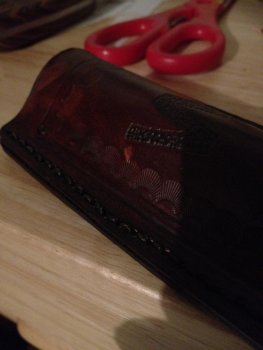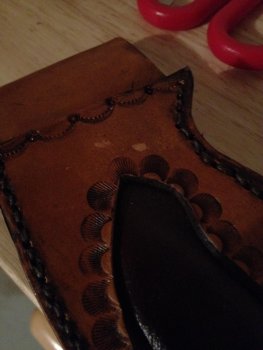There are multiple reasons why dye is rejected as though it were applied over a resist. Of course, glues and cements create their share. Bodily fluids such as spit, blood, sweat, and others---will create a resist unless washed off thoroughly. Oxalic acid will remove dirt smudges, fingerprints, etc. but will not be much help removing a resist that is organic in nature. Contact cements and rubber cements can be removed on occasion by carefully rubbing them with good quality pencil erasers. This should be done after the offending spot is DRY in order to prevent driving the wet mixture into the pores of the leather.
As in most instances, an ounce of prevention will prevent a pound of cure. Place cement only where it is needed and frugally. Do not slop it on, place it where it will not show when the article is stitched. This is a case where less is better than overkill. The seconds you expend to do the job right will save you hours of aggravation and possible loss of the article you have been unable to salvage.------------------Sandy




